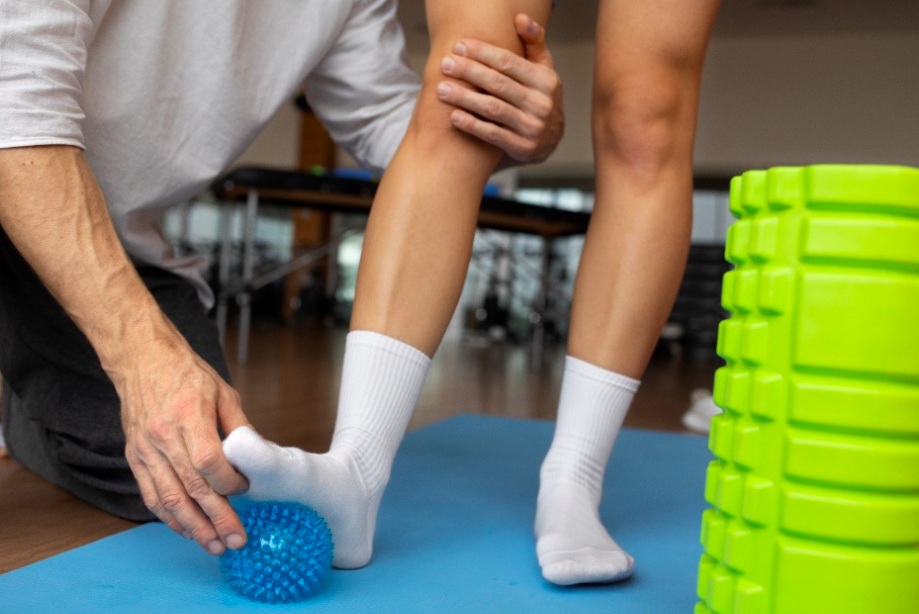How Sports Podiatrists Help Prevent and Treat Athletic Foot Injuries

Athletes and active individuals put a great deal of strain on their feet and lower limbs. Whether you’re a weekend runner, competitive footballer, or high-performance athlete, your feet absorb a significant amount of force during movement. Unfortunately, this also means you’re more susceptible to foot and ankle injuries. That’s where sports podiatrists come in.
Sports podiatrists are highly trained healthcare professionals who specialise in diagnosing, managing, and preventing injuries affecting the foot, ankle, and lower limb in active individuals. Their expertise plays a crucial role in sports injury rehabilitation, injury prevention, and performance optimization.
What Is a Sports Podiatrist?
A sports podiatrist is a podiatry professional who focuses on musculoskeletal and biomechanical conditions related to physical activity. Unlike general podiatrists who may focus more on routine foot care, sports podiatrists deal with complex issues such as overuse injuries, gait abnormalities, and foot mechanics related to movement and sport.
They often work as part of a broader healthcare team, collaborating with physiotherapists, sports doctors, orthopedic surgeons, and exercise physiologists to provide a holistic treatment approach.
Common Athletic Foot Injuries Treated by Sports Podiatrists
Active people are prone to a range of injuries in the feet and ankles due to repetitive stress, poor footwear, or underlying biomechanical problems. Some of the most common issues sports podiatrists treat include:
- Plantar fasciitis: Inflammation of the tissue that runs across the bottom of the foot, often seen in runners.
- Achilles tendinopathy: Overuse injury affecting the Achilles tendon, common in sports involving jumping or sprinting.
- Stress fractures: Tiny cracks in the bones of the foot due to repetitive impact.
- Ankle sprains: Caused by sudden twists or rolling of the ankle, common in field sports.
- Shin splints: Pain along the shin bone due to overuse or improper footwear.
- Turf toe: Sprain of the big toe joint caused by hyperextension, often in athletes playing on artificial surfaces.
These injuries can sideline athletes for weeks or months if not properly managed. Sports podiatrists play a critical role in early diagnosis, effective treatment, and long-term rehabilitation.
How Sports Podiatrists Prevent Injuries
1. Biomechanical Assessments
Sports podiatrists conduct in-depth assessments to understand how an athlete’s body moves. By analysing gait, posture, and foot function, they can detect abnormal movement patterns that increase injury risk. This allows them to recommend changes before problems occur.
2. Custom Orthotics and Footwear Advice
One of the most effective tools in injury prevention is custom orthotics—specially designed shoe inserts that correct biomechanical imbalances. Sports podiatrists tailor these to the individual, improving alignment and reducing stress on vulnerable joints and muscles. They also provide expert advice on selecting the right shoes for a specific sport or foot type.
3. Strengthening and Conditioning Programs
As part of a proactive injury prevention plan, sports podiatrists may prescribe exercises to strengthen the foot and lower limb muscles. This improves stability and resilience, reducing the likelihood of overuse injuries.
Sports Injury Rehabilitation and Recovery
When injuries do occur, sports podiatrists are essential in guiding athletes through a structured sports injury rehabilitation process.
1. Accurate Diagnosis
The first step is pinpointing the exact nature and cause of the injury. Sports podiatrists use a combination of physical exams, diagnostic imaging (such as ultrasound or X-ray), and gait analysis to form a complete picture of the issue.
2. Individualised Treatment Plans
Based on the diagnosis, sports podiatrists develop tailored treatment plans that may include:
- Rest and activity modification
- Strapping or bracing for joint support
- Ice or anti-inflammatory treatments
- Foot mobilisation techniques
- Custom orthotic devices
- Gradual reintroduction to training
Each treatment plan is designed to relieve pain, promote healing, and restore function without risking further injury.
3. Return-to-Sport Planning
One of the most critical stages of sports injury rehabilitation is knowing when and how to return to training and competition safely. Sports podiatrists create structured return-to-play protocols that gradually reintroduce stress to the injured area while monitoring for setbacks. This significantly reduces the risk of reinjury.
Performance Benefits Beyond Injury
Sports podiatry isn’t only about injury management—it also enhances athletic performance. By optimising foot function, improving alignment, and reducing energy loss during movement, athletes often find they move more efficiently, experience less fatigue, and perform at a higher level.
Whether it’s helping a sprinter shave milliseconds off their time or enabling a soccer player to return stronger after an ankle sprain, the contribution of sports podiatry to sports performance is substantial.
When Should You See a Sports Podiatrist?
You don’t need to wait for an injury to consult a sports podiatrist. Consider booking an appointment if you:
- Experience recurring foot, heel, or ankle pain
- Are recovering from a sports-related injury
- Are increasing your training load
- Want advice on footwear or orthotics
- Are starting a new sport or returning after a break
Early intervention can mean faster healing, fewer complications, and better long-term outcomes.
Conclusion
Sports podiatrists are an essential part of any athlete’s support team—whether you’re a seasoned professional or a weekend warrior. From preventing common injuries to guiding athletes through complex rehabilitation, they play a critical role in keeping you active, performing at your best, and free from ongoing issues like foot pain.


